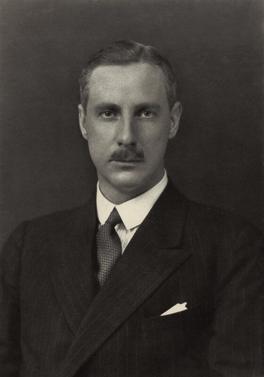Douglas, occasionally spelt Douglass, is a Scottish surname. It is thought to derive from the Scottish Gaelic dubh glas, meaning "black stream". There are numerous places in Scotland from which the surname is derived. The surname has developed into the given name Douglas. Douglas is a habitational name, which could be derived from any of the many places so-named. While there are numerous places with this name in Scotland, it is thought, in most cases, to refer to Douglas, South Lanarkshire, the location of Douglas Castle, the chief stronghold of the Lords of Douglas. The Scottish Gaelic form of the given name is Dùbhghlas[ˈt̪uːl̪ˠəs̪]; the Irish-language forms are Dúghlas and Dubhghlas, which are pronounced [ˈd̪ˠuːɣlˠəsˠ]. According to George Fraser Black, in southern Argyllshire the surname is an Anglicised form of the surnames MacLucas, MacLugash.

Duke of Hamilton is a title in the Peerage of Scotland, created in April 1643. It is the senior dukedom in that peerage, and as such its holder is the premier peer of Scotland, as well as being head of both the House of Hamilton and the House of Douglas. The title, the town of Hamilton in Lanarkshire, and many places around the world are named after members of the Hamilton family. The ducal family's surname, originally "Hamilton", is now "Douglas-Hamilton". Since 1711, the dukedom has been held together with the Dukedom of Brandon in the Peerage of Great Britain, and the dukes since that time have been styled Duke of Hamilton and Brandon, along with several other subsidiary titles.
Baron Clydesmuir, of Braidwood in the County of Lanark, Scotland, is a title in the Peerage of the United Kingdom. It was created in 1948 for the Unionist politician John Colville. He served as Secretary of State for Scotland from 1938 to 1940. His son, the second Baron, was Governor of the Bank of Scotland and Lord Lieutenant of Lanarkshire. As of 2010 the title is held by the latter's son, the third Baron, who succeeded in 1996.
James Graham, 4th Duke of Montrose, KT, PC, styled Marquess of Graham until 1836, of Buchanan Castle in Stirlingshire and 45 Belgrave Square in London, was a British Conservative politician.

David John Colville, 1st Baron Clydesmuir,, was a Scottish Unionist politician, and industrialist. He was director of his family's steel and iron business, David Colville & Sons.
This is a list of people who have served as Lord Lieutenant of County Tyrone.
This is a list of people who have served as Lord Lieutenant of Surrey. Since 1737, all Lords Lieutenant have also been Custos Rotulorum of Surrey.
This is a list of people who served as Lord Lieutenant of Argyllshire. The office was created on 6 May 1794 and replaced by the Lord Lieutenant of Argyll and Bute in 1975.
This is a list of people who have served as Lord Lieutenant of Herefordshire. Before the English Civil War, the lieutenancy of Herefordshire was always held by the Lord Lieutenant of Wales, but after the Restoration, its lieutenants were appointed separately. Since 1714, all the Lord Lieutenants have also been Custos Rotulorum of Herefordshire.

George Gordon, 9th Marquess of Huntly,, styled Lord Strathavon until 1795 and known as The Earl of Aboyne from 1795 to 1836, was a Scottish peer.
The post of Lord Lieutenant of the North Riding of Yorkshire was created in 1660, at the Restoration, and was abolished on 31 March 1974. From 1782 until 1974, all Lords Lieutenant were also Custos Rotulorum of the North Riding of Yorkshire.
This is a list of people who served as Lord Lieutenant of Middlesex. From 1794 to 1965, all Lord Lieutenants were also Custos Rotulorum of Middlesex. The office was abolished on 1 April 1965, with the creation of Greater London and the post of Lord Lieutenant of Greater London, with small parts of Middlesex coming under the jurisdiction of the Lord Lieutenant of Surrey, the Lord Lieutenant of Hertfordshire.

Douglas Hamilton, 8th Duke of Hamilton, 5th Duke of Brandon and 2nd Baron Hamilton of Hameldon, was a Scottish peer, nobleman, and politician.

Clan Douglas is an ancient clan or noble house from the Scottish Lowlands.
Dunbar Hamilton Douglas, 4th Earl of Selkirk FRSE was a Scottish peer.
General Sir James Steuart Denham, 8th and 4th Baronet was a Scottish soldier of the British Army.

Ronald John Bilsland Colville, 2nd Baron Clydesmuir, KT, CB, MBE, TD, was a Scottish soldier and businessman. He notably served as Governor of the Bank of Scotland, Lord Lieutenant of Lanarkshire, and Captain General of the Queen's Bodyguard in Scotland. According to his obituary, he was described as "an outstanding and dedicated servant of Scotland. He was a gentleman of the old school with a genial wit and great generosity of spirit".
The Royal Households of the United Kingdom consists of royal officials and the supporting staff of the British Royal Family, as well as the Royal Household which supports the Sovereign. Each member of the Royal Family who undertakes public duties has his own separate Household.





